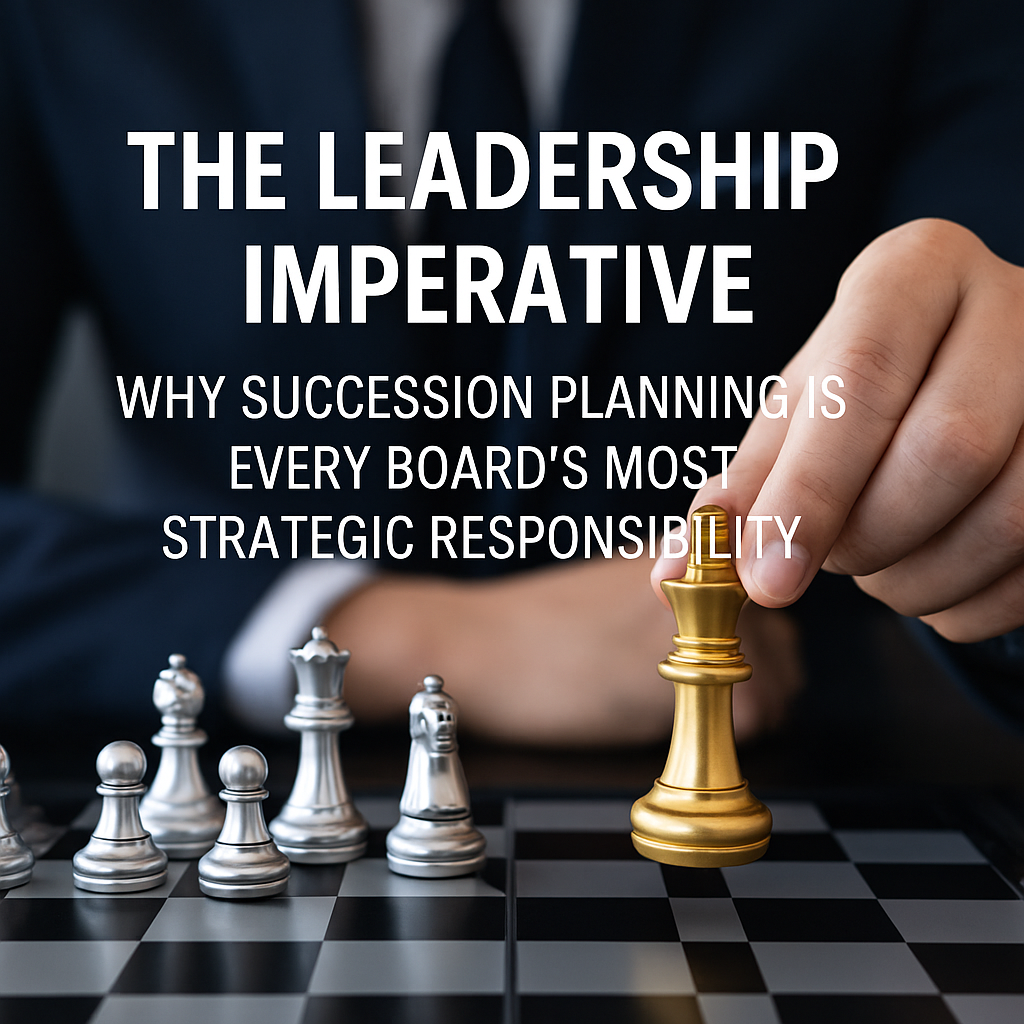Losing good people is expensive. In 2017, Gallup estimated replacing one employee to cost anywhere from half to double that person’s annual salary. That translates to between $660,000 to $2.6 million per year for a 100-person organization with an average salary of $50,000.
That costly burden makes it even harder to survive in a competitive labor market, and today’s market is more competitive than ever. According to a 2020 study by Crayon, a market and competitive intelligence tools supplier, 90% of businesses surveyed feel the market has become more competitive; 48% of respondents said it had become “much more” competitive. Add in an exhausted workforce and fears of recession, and most companies today would struggle to survive the loss of good people.
Company founders and executives depend on their leadership teams for stability. While we as leaders try our best to build loyalty and engagement to keep them, we also need a plan if it ever comes down to having to replace them. Record-breaking quit rates are only finally starting to slow down. Considering how costly and difficult it is to attract and recruit high-quality talent to replace those who leave, everyone should aim to train and recruit leaders from within. This way, we not only offer them a reason to stay with our company, but we also develop their talent and potential contribution to it.
Pinpoint potential leaders
Potential leaders might be more prone to take the initiative or have the natural ability to lead and inspire others. To find the team members who would make excellent leaders, look for employees who demonstrate leadership qualities — problem-solving skills, teamwork, communication and a desire to learn and grow. Consider employees from different backgrounds and levels of the organization since they may bring unique perspectives and approaches to leadership. Open communication within your organization will make it easier to identify employees with leadership potential wherever they may be.
Pay attention to how employees handle challenges and interact with others. Do they take the initiative and step up as leaders or shy away from leadership roles? Potential leaders may be evident in how they communicate and handle conflict. Team players known for their proactive attitudes who think outside the box and are motivated to get things done would be perfect candidates.
Past performance is a good indicator of a potential leader, so review performance evaluations and get feedback from supervisors and colleagues to provide insight into an employee’s leadership potential. If an employee has consistently exceeded expectations and has a substantial development plan in place, they may have the qualities of a leader.
Pave pathways for opportunities
Once we know who our potential leaders are, we should identify areas in our organization that need leadership and determine which have the skills and qualities necessary to fill those roles. Then we must provide leadership opportunities, like leading a project or team, to develop their skills and confidence. Provide leadership development training and resources — like direct coaching, individual mentorship or classes and training – to help further build employee skills and knowledge.
Gartner’s research for the Harvard Business Review suggests that internal leadership training could match rising employee expectations of purpose, flexibility, and career opportunities, as well as DEI and SEG initiatives and new concerning trends like “quiet quitting.” They recommend “quiet hiring” — encouraging internal talent mobility and providing development opportunities that enable workers to step in and meet the company’s evolving needs. It also allows managers to hire based on the skills needed to do a job rather than education or years of experience. Employees at all levels of the organization, including those from more diverse backgrounds, can have the opportunity to advance if they demonstrate leadership potential.
It’s important to provide ongoing support for developing leaders by giving constructive feedback. Provide specific examples of what they are doing well and their areas for improvement. Use “I” statements rather than “you” statements to avoid sounding confrontational and avoid making personal attacks — focus only on the behavior that needs to be addressed. Deliver timely feedback as soon as possible after the event rather than waiting for it to build up, and foster productive communication by encouraging team members to share their perspectives. Then, offer support and resources to help improve. It can be challenging, but creating a company culture of giving and receiving feedback is how we help our team members develop and grow.
Create a leadership pipeline
Promoting from within can help to retain valuable employees who may otherwise be attracted to other opportunities, saving on the cost and effort of hiring and training someone new to replace them. When people know they have advancement opportunities to strive for, they feel more engaged with a company. It shows that the organization values and trusts its employees, which boosts morale for a more positive and motivated workforce. Gallup researchers recommend companies train their managers to conduct frequent and meaningful conversations with employees about their ambitions and use this information to help them achieve those goals, preventing the kind of disengagement that could make them leave.
Employees who are promoted from within an organization already have a strong understanding of its culture, policies, and processes. Instead of spending extra time training and onboarding someone completely unfamiliar with the company, someone from within can hit the ground running in their new role with much more speed and ease. Promoting from within improves succession planning by building a strong leadership pipeline that ensures a large pool of qualified internal candidates.
Building leaders from within our teams develops the talent and potential of our employees in a way that creates value for the company. Creating leadership opportunities drives employee engagement and morale. It sets up leaders ready to take on new opportunities as they arise. A good leader should honor employees who demonstrate leadership qualities with recognition. This could be in the form of bonuses, promotions, and more. This will encourage them to continue learning and developing. The organization can also grow and thrive when we help employees grow and thrive as leaders.
Source: Entrepreneur









